 Artificial Intelligence (AI) is transforming the way we live and work, with many of us knowingly or unknowingly using some form of AI daily. Businesses are also adopting AI in increasingly innovative ways. One example of this is the use of pricing algorithms, which use large datasets on market conditions to set prices.
Artificial Intelligence (AI) is transforming the way we live and work, with many of us knowingly or unknowingly using some form of AI daily. Businesses are also adopting AI in increasingly innovative ways. One example of this is the use of pricing algorithms, which use large datasets on market conditions to set prices.
While these tools can drive innovation and efficiency, they can also raise significant competition concerns. Subsequently, competition authorities around the world are dedicating efforts to understanding how businesses are using AI and, importantly, the potential risks its use may pose to competition.
How AI pricing tools can enhance competition
The use of AI pricing tools offers some clear potential efficiencies for firms, with the potential to reduce costs that can potentially translate into lower prices for consumers.
Take, for instance, industries with highly fluctuating demand, such as airlines or hotels. Algorithms can enable businesses to monitor demand and supply in real time and respond more quickly, which could help firms to respond more effectively to changing consumer preferences. Similarly, in industries which have extensive product ranges, like supermarkets, algorithms can significantly reduce costs and save resources that are usually required to manage pricing strategies across a large range of products.
Furthermore, as pricing algorithms can monitor competitors’ prices, firms can more quickly respond to their rivals. This could promote competition by helping prices to reach the competitive level more quickly, to the benefit of consumers.
How AI pricing tools can undermine competition
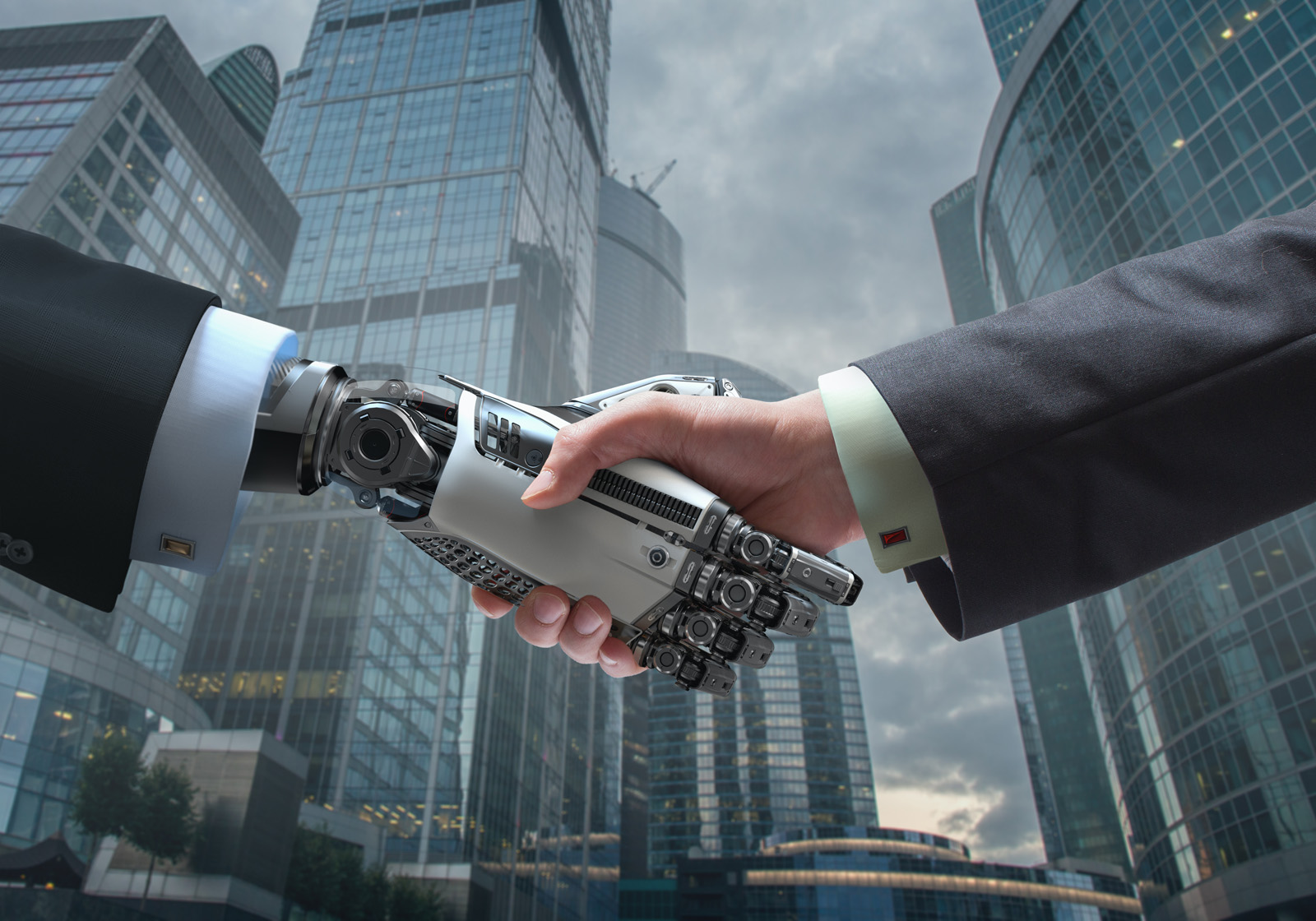 However, some of the very features that make algorithms effective can also facilitate anti-competitive behaviour that can harm consumers. In economic terms, collusion occurs when firms co-ordinate their actions to reduce competition, often leading to higher prices. This can happen both explicitly or implicitly. Explicit collusion, commonly referred to as illegal cartels, involves firms agreeing to co-ordinate their prices instead of competing. On the other hand, tacit collusion occurs when firms’ pricing strategies are aligned without a formal agreement.
However, some of the very features that make algorithms effective can also facilitate anti-competitive behaviour that can harm consumers. In economic terms, collusion occurs when firms co-ordinate their actions to reduce competition, often leading to higher prices. This can happen both explicitly or implicitly. Explicit collusion, commonly referred to as illegal cartels, involves firms agreeing to co-ordinate their prices instead of competing. On the other hand, tacit collusion occurs when firms’ pricing strategies are aligned without a formal agreement.
The ability for these algorithms to monitor competitors’ prices and react to changes quickly could work to facilitate collusion, by learning to avoid price wars to maximise long-term profits. This could result in harm to consumers through sustained higher prices.
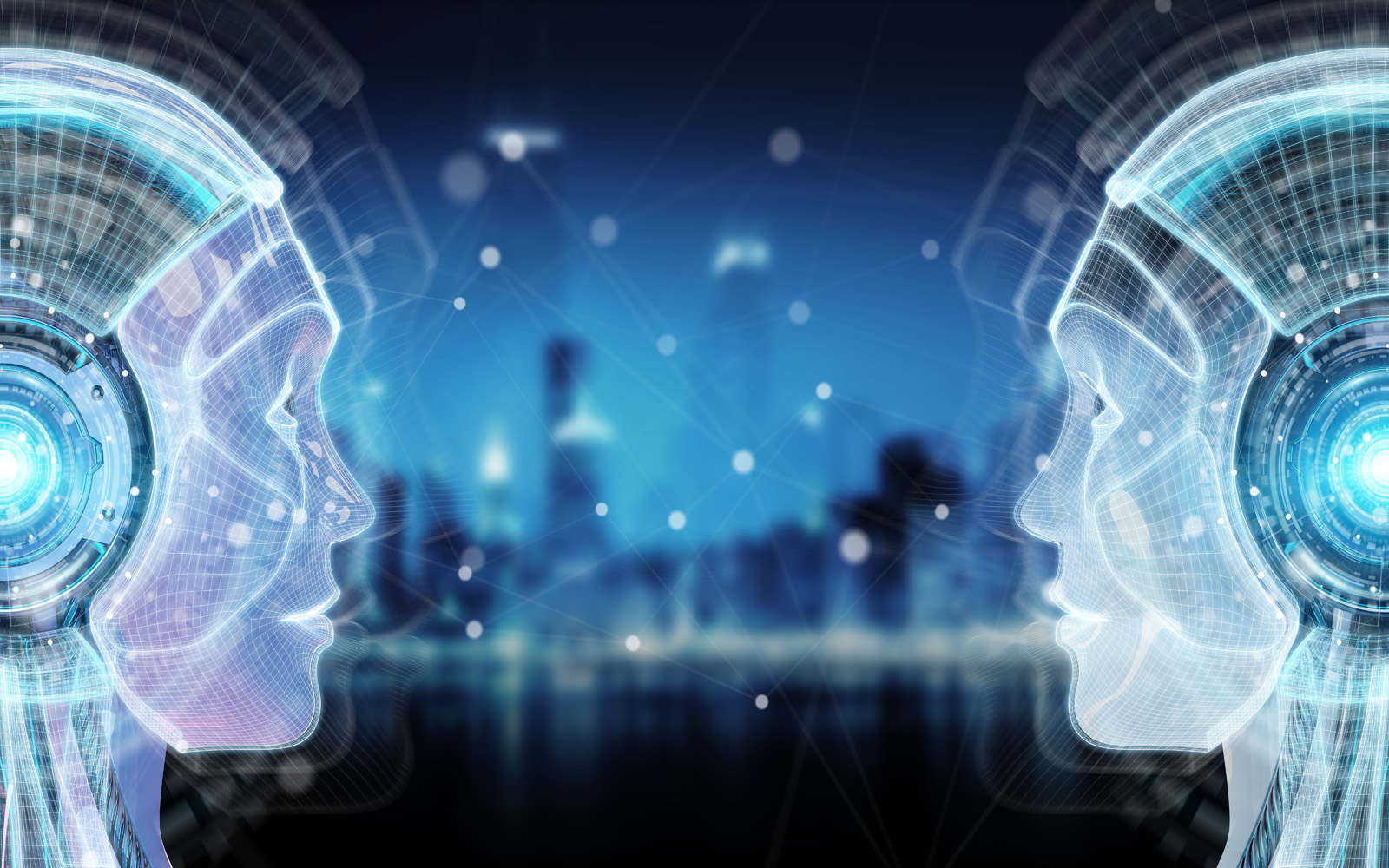 Furthermore, there may be additional risks if competitors use the same algorithmic software to set prices. This can facilitate the sharing of confidential information (such as pricing strategies) and, as the algorithms may be able to predict the response of their competitors, can facilitate co-ordination to achieve higher prices to the detriment of consumers.
Furthermore, there may be additional risks if competitors use the same algorithmic software to set prices. This can facilitate the sharing of confidential information (such as pricing strategies) and, as the algorithms may be able to predict the response of their competitors, can facilitate co-ordination to achieve higher prices to the detriment of consumers.
This situation may resemble what is known as a ‘hub and spoke’ cartel, in which competing firms (the ‘spokes’) use the assistance of another firm at a different level of the supply chain (e.g. a buyer or supplier that acts as a ‘hub’) to help them co-ordinate their actions. In this case, a shared artificial pricing tool can act as the ‘hub’ to enable co-ordination amongst the firms, even without any direct communication between the firms.
In 2015 the CMA investigated a cartel involving two companies, Trod Limited and GB Eye Limited, which were selling posters and frames through Amazon (see linked CMA Press release below). These firms used pricing algorithms, similar to those described above, to monitor and adjust their prices, ensuring that neither undercut the other. In this case, there was also an explicit agreement between the two firms to carry out this strategy.
What does this mean for competition policy?
Detecting collusion has always been a significant challenge for the competition authorities, especially when no formal agreement exists between firms. The adoption of algorithmic pricing adds another layer of complexity to detection of cartels and could raise questions about accountability when algorithms inadvertently facilitate collusion.
 In the posters and frames case, the CMA was able to act because one of the firms involved reported the cartel itself. Authorities like the CMA depend heavily on the firms involved to ‘whistle blow’ and report cartel involvement. They incentivise firms to do this through leniency policies that can offer firms reduced penalties or even complete immunity if they provide evidence and co-operate with the investigation. For example, GB eye reported the cartel to the CMA and therefore, under the CMA’s leniency policy, was not fined.
In the posters and frames case, the CMA was able to act because one of the firms involved reported the cartel itself. Authorities like the CMA depend heavily on the firms involved to ‘whistle blow’ and report cartel involvement. They incentivise firms to do this through leniency policies that can offer firms reduced penalties or even complete immunity if they provide evidence and co-operate with the investigation. For example, GB eye reported the cartel to the CMA and therefore, under the CMA’s leniency policy, was not fined.
But it’s not all doom and gloom for competition authorities. Developments in Artificial Intelligence could also open doors to improved detection tools, which may have come a long way since the discussion in a blog on this topic several years ago. Competition Authorities around the world are working diligently to expand their understanding of AI and develop effective regulations for these rapidly evolving markets.
Articles
Questions
- In what types of markets might it be more likely that artificial intelligence can facilitate collusion?
- How could AI pricing tools impact the factors that make collusion more or less sustainable in a market?
- What can competition authorities do to prevent AI-assisted collusion taking place?
 Global long-term economic growth has slowed dramatically since the financial crisis of 2007–8. This can be illustrated by comparing the two 20-year periods 1988 to 2007 and 2009 to 2028 (where IMF forecasts are used for 2024 to 2028: see WEO Database under the Data link below). Over the two periods, average annual world growth fell from 3.8% to 3.1%. In advanced countries it fell from 2.9% to 1.6% and in developing countries from 4.8% to 4.3%. In the UK it fell from 2.4% to 1.2%, in the USA from 3.1% to 1.8% and in Japan from 1.9% to 0.5%.
Global long-term economic growth has slowed dramatically since the financial crisis of 2007–8. This can be illustrated by comparing the two 20-year periods 1988 to 2007 and 2009 to 2028 (where IMF forecasts are used for 2024 to 2028: see WEO Database under the Data link below). Over the two periods, average annual world growth fell from 3.8% to 3.1%. In advanced countries it fell from 2.9% to 1.6% and in developing countries from 4.8% to 4.3%. In the UK it fell from 2.4% to 1.2%, in the USA from 3.1% to 1.8% and in Japan from 1.9% to 0.5%.
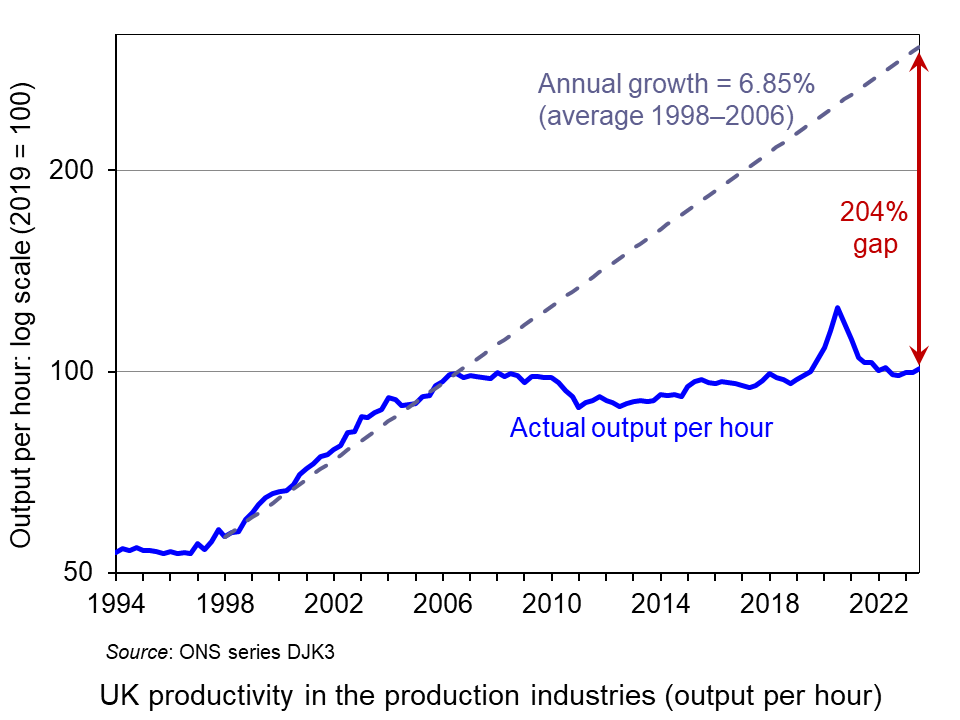 In the UK, labour productivity growth in the production industries was 6.85% per annum from 1998 to 2006. If this growth rate had been maintained, productivity would have been 204% higher by the end of 2023 than it actually was. This is shown in the chart (click here for a PowerPoint).
In the UK, labour productivity growth in the production industries was 6.85% per annum from 1998 to 2006. If this growth rate had been maintained, productivity would have been 204% higher by the end of 2023 than it actually was. This is shown in the chart (click here for a PowerPoint).
The key driver of long-term economic growth is labour productivity, which can best be measured by real GDP per hour worked. This depends on three things: the amount of capital per worker, the productivity of this capital and the efficiency of workers themselves – the latter two giving total factor productivity (TFP). Productivity growth has slowed, and with it the long-term rate of economic growth.
If we are measuring growth in output per head of the population, as opposed to simple growth in output, then another important factor is the proportion of the population that works. With ageing populations, many countries are facing an increase in the proportion of people not working. In most countries, these demographic pressures are likely to increase.
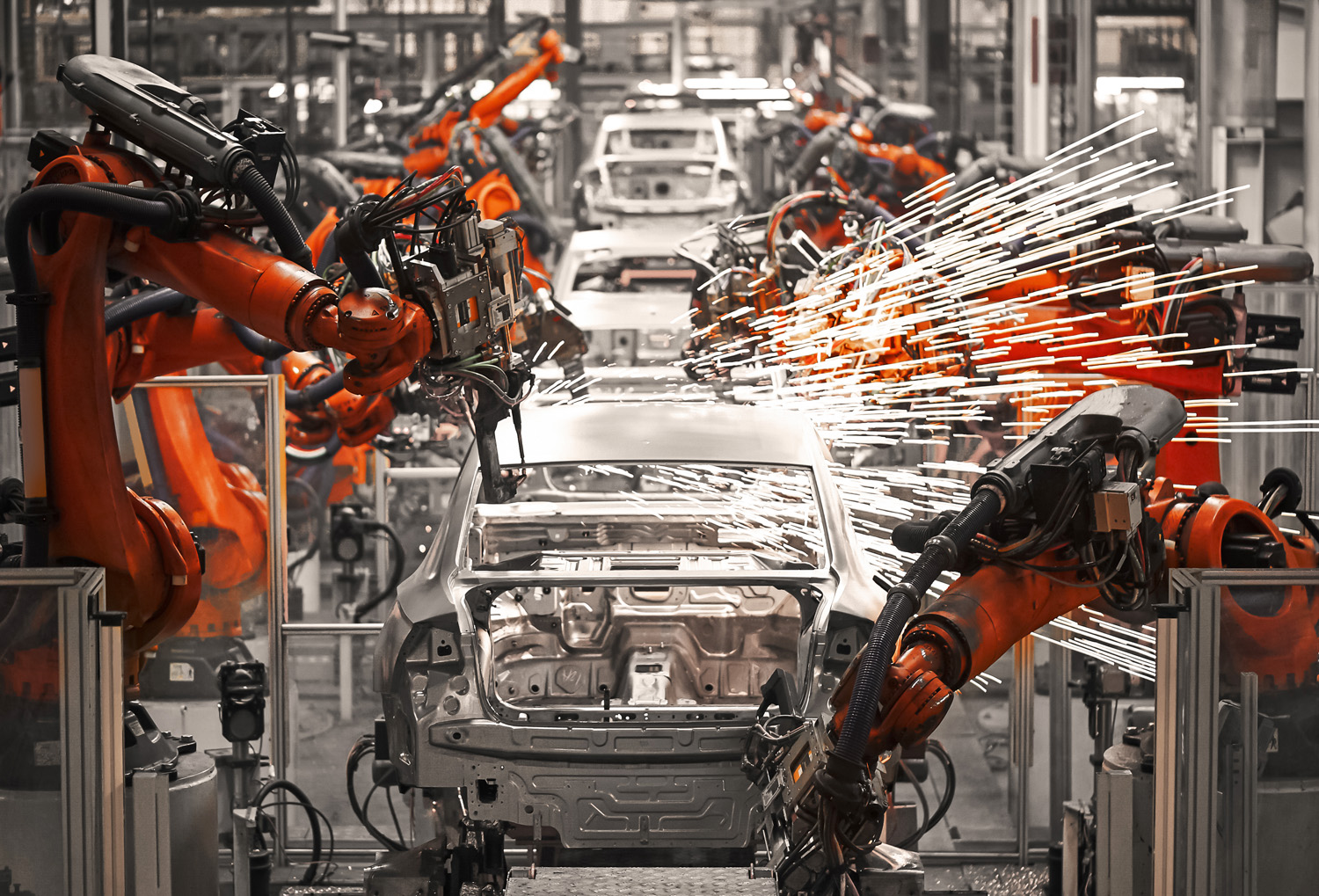 A major determinant of long-term economic growth and productivity is investment. Investment has been badly affected by crises, such as the financial crisis and COVID, and by geopolitical tensions, such as the war in Ukraine and tensions between the USA and China and potential trade wars. It has also been adversely affected by government attempts to deal with rising debt caused by interventions following the financial crisis and COVID. The fiscal squeeze and, more recently higher interest rates, have dampened short-term growth and discouraged investment, thereby dampening long-term growth.
A major determinant of long-term economic growth and productivity is investment. Investment has been badly affected by crises, such as the financial crisis and COVID, and by geopolitical tensions, such as the war in Ukraine and tensions between the USA and China and potential trade wars. It has also been adversely affected by government attempts to deal with rising debt caused by interventions following the financial crisis and COVID. The fiscal squeeze and, more recently higher interest rates, have dampened short-term growth and discouraged investment, thereby dampening long-term growth.
Another factor adversely affecting productivity has been a lower growth of allocative efficiency. Competition in many industries has declined as the rate of new firms entering and exiting markets has slowed. The result has been an increase in concentration and a growth in supernormal profits.
In the UK’s case, growth prospects have also been damaged by Brexit. According to Bank of England and OBR estimates, Brexit has reduced productivity by around 4% (see the blog: The costs of Brexit: a clearer picture). For many companies in the UK, Brexit has hugely increased the administrative burdens of trading with the EU. It has also reduced investment and led to a slower growth in the capital stock.
The UK’s poor productivity growth over many yeas is examined in the blog The UK’s poor productivity record.
Boosting productivity
So, how could productivity be increased and what policies could help the process?
 Artificial intelligence. One important driver of productivity growth is technological advance. The rapid advance in AI and its adoption across much of industry is likely to have a dramatic effect on working practices and output. Estimates by the IMF suggest that some 40% of jobs globally and 60% in advanced countries could be affected – some replaced and others complemented and enhanced by AI. The opportunities for raising incomes are huge, but so too are the dangers of displacing workers and deepening inequality, as some higher-paid jobs are enhanced by AI, while many lower paid jobs are little affected and other jobs disappear.
Artificial intelligence. One important driver of productivity growth is technological advance. The rapid advance in AI and its adoption across much of industry is likely to have a dramatic effect on working practices and output. Estimates by the IMF suggest that some 40% of jobs globally and 60% in advanced countries could be affected – some replaced and others complemented and enhanced by AI. The opportunities for raising incomes are huge, but so too are the dangers of displacing workers and deepening inequality, as some higher-paid jobs are enhanced by AI, while many lower paid jobs are little affected and other jobs disappear.
AI is also likely to increase returns to capital. This may help to drive investment and further boost economic growth. However, the increased returns to capital are also likely to exacerbate inequality.
To guard against the growth of market power and its abuse, competition policies may need strengthening to ensure that the benefits of AI are widely spread and that new entrants are encouraged. Also training and retraining opportunities to allow workers to embrace AI and increase their mobility will need to be provided.
 Training. And it is not just training in the use of AI that is important. Training generally is a key ingredient in encouraging productivity growth. In the UK, there has been a decline in investment in adult education and training, with a 70% reduction since the early 2000s in the number of adults undertaking publicly-funded training, and with average spending on training by employers decreasing by 27% per trainee since 2011. The Institute for Fiscal Studies identifies five main policy levers to address this: “public funding of qualifications and skills programmes, loans to learners, training subsidies, taxation of training and the regulation of training” (see link in articles below).
Training. And it is not just training in the use of AI that is important. Training generally is a key ingredient in encouraging productivity growth. In the UK, there has been a decline in investment in adult education and training, with a 70% reduction since the early 2000s in the number of adults undertaking publicly-funded training, and with average spending on training by employers decreasing by 27% per trainee since 2011. The Institute for Fiscal Studies identifies five main policy levers to address this: “public funding of qualifications and skills programmes, loans to learners, training subsidies, taxation of training and the regulation of training” (see link in articles below).
Competition. Another factor likely to enhance productivity is competition, both internationally and within countries. Removing trade restrictions could boost productivity growth; erecting barriers to protect inefficient domestic industry would reduce it.
Investment. Policies to encourage investment are also key to productivity growth. Private-sector investment can be encouraged by tax incentives. For example, in the UK the Annual Investment Allowance allows businesses to claim 100% of the cost of plant and machinery up to £1m in the year it is incurred. However, for tax relief to produce significant effects on investment, companies need to believe that the policy will stay and not be changed as economic circumstances or governments change.
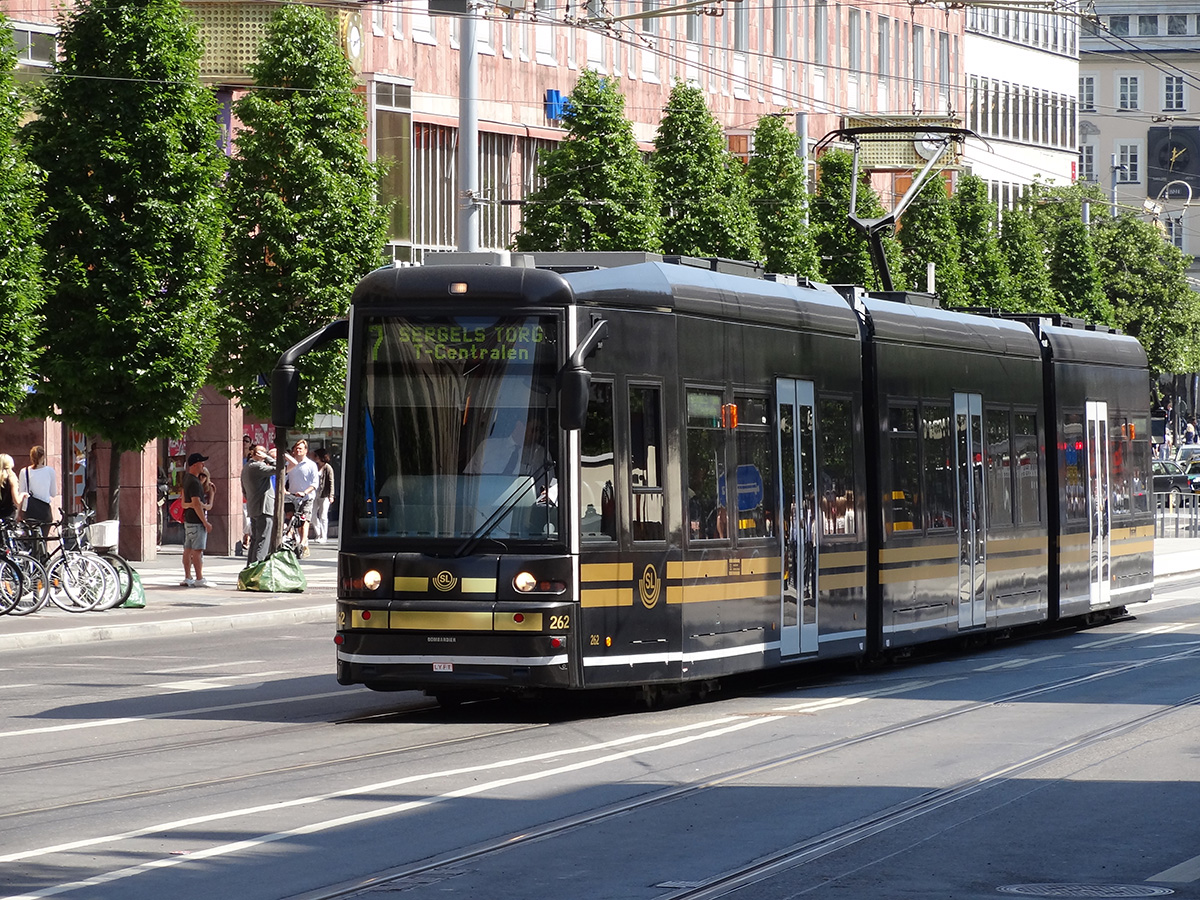 Public-sector investment is also key. Good road and rail infrastructure and public transport are vital in encouraging private investment and labour mobility. And investment in health, education and training are a key part in encouraging the development of human capital. Many countries, the UK included, cut back on public-sector capital investment after the financial crisis and this has had a dampening effect on economic growth.
Public-sector investment is also key. Good road and rail infrastructure and public transport are vital in encouraging private investment and labour mobility. And investment in health, education and training are a key part in encouraging the development of human capital. Many countries, the UK included, cut back on public-sector capital investment after the financial crisis and this has had a dampening effect on economic growth.
Regional policy. External economies of scale could be encouraged by setting up development areas in various regions. Particular industries could be attracted to specific areas, where local skilled workers, managerial expertise and shared infrastructure can benefit all the firms in the industry. These ‘agglomeration economies’ have been very limited in the UK compared with many other countries with much stronger regional economies.
Changing the aims and governance of firms. A change in corporate structure and governance could also help to drive investment and productivity. According to research by the think tank, Demos (see the B Lab UK article and the second report below), if legislation required companies to consider the social, economic and environmental impact of their business alongside profitability, this could have a dramatic effect on productivity. If businesses were required to be ‘purpose-led’, considering the interests of all their stakeholders, this supply-side reform could dramatically increase growth and well-being.
Such stakeholder-governed businesses currently outperform their peers with higher levels of investment, innovation, product development and output. They also have higher levels of staff engagement and satisfaction.
Articles
- World Must Prioritize Productivity Reforms to Revive Medium-Term Growth
IMF Blog, Nan Li and Diaa Noureldin (10/4/24)
- Why has productivity slowed down?
Oxford Martin School News, Ian Goldin, Pantelis Koutroumpis, François Lafond and Julian Winkler (18/3/24)
- How can the UK revive its ailing productivity?
Economics Observatory, Michelle Kilfoyle (14/3/24)
- With the UK creeping out of recession, here’s an economist’s brief guide to improving productivity
The Conversation, Nigel Driffield (13/3/24)
- UK economy nearly a third smaller thanks to ‘catastrophically bad’ productivity slowdown
City A.M., Chris Dorrell (12/3/24)
- Can AI help solve the UK’s public sector productivity puzzle?
City A.M., Chris Dorrell (11/3/24)
- AI Will Transform the Global Economy. Let’s Make Sure it Benefits Humanity
IMF Blog, Kristalina Georgieva (14/1/24)
- Productivity and Investment: Time to Manage the Project of Renewal
NIESR, Paul Fisher (12/3/24)
- Productivity trends using key national accounts indicators
Eurostat (15/3/24)
- New report says change to company law could add £149bn to the UK economy
B Lab UK (28/11/23)
- Investment in training and skills: Green Budget Chapter 9
Institute for Fiscal Studies, Imran Tahir (12/10/23)
Reports
Data
Questions
- Why has global productivity growth been lower since 2008 than before 2008?
- Why has the UK’s productivity growth been lower than many other advanced economies?
- How does the short-run macroeconomic environment affect long-term growth?
- Find out why Japan’s productivity growth has been so poor compared with other countries.
- What are likely to be the most effective means of increasing productivity growth?
- How may demand management policies affect the supply side of the economy?
- How may the adoption of an ESG framework by companies for setting objectives affect productivity growth?
 Artificial intelligence is having a profound effect on economies and society. From production, to services, to healthcare, to pharmaceuticals; to education, to research, to data analysis; to software, to search engines; to planning, to communication, to legal services, to social media – to our everyday lives, AI is transforming the way humans interact. And that transformation is likely to accelerate. But what will be the effects on GDP, on consumption, on jobs, on the distribution of income, and human welfare in general? These are profound questions and ones that economists and other social scientists are pondering. Here we look at some of the issues and possible scenarios.
Artificial intelligence is having a profound effect on economies and society. From production, to services, to healthcare, to pharmaceuticals; to education, to research, to data analysis; to software, to search engines; to planning, to communication, to legal services, to social media – to our everyday lives, AI is transforming the way humans interact. And that transformation is likely to accelerate. But what will be the effects on GDP, on consumption, on jobs, on the distribution of income, and human welfare in general? These are profound questions and ones that economists and other social scientists are pondering. Here we look at some of the issues and possible scenarios.
According to the Merrill/Bank of America article linked below, when asked about the potential for AI, ChatGPT replied:
AI holds immense potential to drive innovation, improve decision-making processes and tackle complex problems across various fields, positively impacting society.
But the magnitude and distribution of the effects on society and economic activity are hard to predict. Perhaps the easiest is the effect on GDP. AI can analyse and interpret data to meet economic goals. It can do this much more extensively and much quicker than using pre-AI software. This will enable higher productivity across a range of manufacturing and service industries. According to the Merrill/Bank of America article, ‘global revenue associated with AI software, hardware, service and sales will likely grow at 19% per year’. With productivity languishing in many countries as they struggle to recover from the pandemic, high inflation and high debt, this massive boost to productivity will be welcome.
But whilst AI may lead to productivity growth, its magnitude is very hard to predict. Both the ‘low-productivity future’ and the ‘high-productivity future’ described in the IMF article linked below are plausible. Productivity growth from AI may be confined to a few sectors, with many workers displaced into jobs where they are less productive. Or, the growth in productivity may affect many sectors, with ‘AI applied to a substantial share of the tasks done by most workers’.
Growing inequality?
 Even if AI does massively boost the growth in world GDP, the distribution is likely to be highly uneven, both between countries and within countries. This could widen the gap between rich and poor and create a range of social tensions.
Even if AI does massively boost the growth in world GDP, the distribution is likely to be highly uneven, both between countries and within countries. This could widen the gap between rich and poor and create a range of social tensions.
In terms of countries, the main beneficiaries will be developed countries in North America, Europe and Asia and rapidly developing countries, largely in Asia, such as China and India. Poorer developing countries’ access to the fruits of AI will be more limited and they could lose competitive advantage in a number of labour-intensive industries.
Then there is growing inequality between the companies controlling AI systems and other economic actors. Just as companies such as Microsoft, Apple, Google and Meta grew rich as computing, the Internet and social media grew and developed, so these and other companies at the forefront of AI development and supply will grow rich, along with their senior executives. The question then is how much will other companies and individuals benefit. Partly, it will depend on how much production can be adapted and developed in light of the possibilities that AI presents. Partly, it will depend on competition within the AI software market. There is, and will continue to be, a rush to develop and patent software so as to deliver and maintain monopoly profits. It is likely that only a few companies will emerge dominant – a natural oligopoly.
Then there is the likely growth of inequality between individuals. The reason is that AI will have different effects in different parts of the labour market.
The labour market
 In some industries, AI will enhance labour productivity. It will be a tool that will be used by workers to improve the service they offer or the items they produce. In other cases, it will replace labour. It will not simply be a tool used by labour, but will do the job itself. Workers will be displaced and structural unemployment is likely to rise. The quicker the displacement process, the more will such unemployment rise. People may be forced to take more menial jobs in the service sector. This, in turn, will drive down the wages in such jobs and employers may find it more convenient to use gig workers than employ workers on full- or part-time contracts with holidays and other rights and benefits.
In some industries, AI will enhance labour productivity. It will be a tool that will be used by workers to improve the service they offer or the items they produce. In other cases, it will replace labour. It will not simply be a tool used by labour, but will do the job itself. Workers will be displaced and structural unemployment is likely to rise. The quicker the displacement process, the more will such unemployment rise. People may be forced to take more menial jobs in the service sector. This, in turn, will drive down the wages in such jobs and employers may find it more convenient to use gig workers than employ workers on full- or part-time contracts with holidays and other rights and benefits.
But the development of AI may also lead to the creation of other high-productivity jobs. As the Goldman Sachs article linked below states:
Jobs displaced by automation have historically been offset by the creation of new jobs, and the emergence of new occupations following technological innovations accounts for the vast majority of long-run employment growth… For example, information-technology innovations introduced new occupations such as webpage designers, software developers and digital marketing professionals. There were also follow-on effects of that job creation, as the boost to aggregate income indirectly drove demand for service sector workers in industries like healthcare, education and food services.
Nevertheless, people could still lose their jobs before being re-employed elsewhere.
The possible rise in structural unemployment raises the question of retraining provision and its funding and whether workers would be required to undertake such retraining. It also raises the question of whether there should be a universal basic income so that the additional income from AI can be spread more widely. This income would be paid in addition to any wages that people earn. But a universal basic income would require finance. How could AI be taxed? What would be the effects on incentives and investment in the AI industry? The Guardian article, linked below, explores some of these issues.
The increased GDP from AI will lead to higher levels of consumption. The resulting increase in demand for labour will go some way to offsetting the effects of workers being displaced by AI. There may be new employment opportunities in the service sector in areas such as sport and recreation, where there is an emphasis on human interaction and where, therefore, humans have an advantage over AI.
Another issue raised is whether people need to work so many hours. Is there an argument for a four-day or even three-day week? We explored these issues in a recent blog in the context of low productivity growth. The arguments become more compelling when productivity growth is high.
Other issues
AI users are not all benign. As we are beginning to see, AI opens the possibility for sophisticated crime, including cyberattacks, fraud and extortion as the technology makes the acquisition and misuse of data, and the development of malware and phishing much easier.
 Another set of issues arises in education. What knowledge should students be expected to acquire? Should the focus of education continue to shift towards analytical skills and understanding away from the simple acquisition of knowledge and techniques. This has been a development in recent years and could accelerate. Then there is the question of assessment. Generative AI creates a range of possibilities for plagiarism and other forms of cheating. How should modes of assessment change to reflect this problem? Should there be a greater shift towards exams or towards project work that encourages the use of AI?
Another set of issues arises in education. What knowledge should students be expected to acquire? Should the focus of education continue to shift towards analytical skills and understanding away from the simple acquisition of knowledge and techniques. This has been a development in recent years and could accelerate. Then there is the question of assessment. Generative AI creates a range of possibilities for plagiarism and other forms of cheating. How should modes of assessment change to reflect this problem? Should there be a greater shift towards exams or towards project work that encourages the use of AI?
Finally, there is the issue of the sort of society we want to achieve. Work is not just about producing goods and services for us as consumers – work is an important part of life. To the extent that AI can enhance working life and take away a lot of routine and boring tasks, then society gains. To the extent, however, that it replaces work that involved judgement and human interaction, then society might lose. More might be produced, but we might be less fulfilled.
Articles
- The Macroeconomics of Artificial Intelligence
IMF publications, Erik Brynjolfsson and Gabriel Unger (December 2023)
- Economic impacts of artificial intelligence (AI)
European Parliamentary Research Service, Marcin Szczepański (July 2019)
- Artificial intelligence: A real game changer
Chief Investment Office, Merrill/Bank of America (July 2023)
 Generative AI could raise global GDP by 7%
Generative AI could raise global GDP by 7%Goldman Sachs, Joseph Briggs (5/4/23)
- The macroeconomic impact of artificial intelligence
PwC, Jonathan Gillham, Lucy Rimmington, Hugh Dance, Gerard Verweij, Anand Rao, Kate Barnard Roberts and Mark Paich (February 2018)
- How genAI is revolutionizing the field of economics
CNN, Bryan Mena and Samantha Delouya (12/10/23)
- AI-powered digital colleagues are here. Some ‘safe’ jobs could be vulnerable.
BBC Worklife, Sam Becker (30/11/23)
- Generative AI and Its Economic Impact: What You Need to Know
Investopedia, Jim Probasco (1/12/23)
- AI is coming for our jobs! Could universal basic income be the solution?
The Guardian Philippa Kelly (16/11/23)
- CFPB chief’s warning: AI is a ‘natural oligopoly’ in the making
Politico, Sam Sutton (21/11/23)
Questions
- Which industries are most likely to benefit from the development of AI?
- Distinguish between labour-replacing and labour-augmenting technological progress in the context of AI.
- How could AI reduce the amount of labour per unit of output and yet result in an increase in employment?
- What people are most likely to (a) gain, (b) lose from the increasing use of AI?
- Is the distribution of income likely to become more equal or less equal with the development and adoption of AI? Explain.
- What policies could governments adopt to spread the gains from AI more equally?
 The emergence of the digital economy has brought about increased competition across a wide range of products and services. The digital economy has provided businesses with the opportunity to produce new categories of goods and services with the aid of artificial intelligence. This new digital era has also been beneficial for consumers who now have greater choice and access to often higher-quality products at lower prices.
The emergence of the digital economy has brought about increased competition across a wide range of products and services. The digital economy has provided businesses with the opportunity to produce new categories of goods and services with the aid of artificial intelligence. This new digital era has also been beneficial for consumers who now have greater choice and access to often higher-quality products at lower prices.
But while the digital revolution has facilitated greater competition, it also presents some challenges for competition law enforcement. Competition agencies continue to intensify their scrutiny of the digital economy as they try to get to grips with both the opportunities and challenges.
The role of regulation
Many agencies are aware that regulatory overreach could have negative effects on the development of digital markets. Therefore, any competition enforcement in this area needs to be evidenced-based.
A number of agencies have commissioned market studies or appointed experts in the digital field to prepare industry reports. While many of these reports and studies have found that existing competition rules generally continue to provide a solid basis for protecting competition in the digital age, there is growing demand for various changes to regulation. The reports have generally noted that the traditional tools for competition analysis may require some adaptation or refinement to address better the specificities of online markets, such as the multisided nature of platforms, network effects, zero-price markets, ‘big data’ and the increased use of algorithms.
 Tech giants and online platforms, in particular, have been a focus of recent intervention by competition authorities. Investigations and intervention have related to a range of practices, including self-preferencing in the ranking of search results, the bundling of apps (and other alleged anti-competitive leveraging strategies), the collection, usage and sharing of data, and the setting of access conditions to mobile ecosystems and app stores.
Tech giants and online platforms, in particular, have been a focus of recent intervention by competition authorities. Investigations and intervention have related to a range of practices, including self-preferencing in the ranking of search results, the bundling of apps (and other alleged anti-competitive leveraging strategies), the collection, usage and sharing of data, and the setting of access conditions to mobile ecosystems and app stores.
The duration and complexity of these investigations have been met with concerns that competition authorities are not sufficiently equipped to protect competition in fast-moving digital markets. These concerns have been amplified by the growth in size and importance of online platforms, their significant economies of scale and network effects, and the risk that market power in digital markets can become quickly entrenched.
In addition to the commissioned reports, some agencies have established or appointed specialist digital markets units or officers. The aim of such units is to develop expertise and regulation to deal with fast-paced digital markets. In Europe, The Digital Markets Act (DMA) was adopted by the EU in response to these concerns to establish a uniform ex-ante regulatory regime to make digital markets fairer and more competitive, and to prevent a fragmentation of the EU’s internal market.
A recent case concerns Apple. Because of the Digital Markets Act, Apple has been required to allow app store competitors onto its products. This will come into effect in 2024.
UK policy
In the UK, the government has been concerned that ‘the unprecedented concentration of power amongst a small number of digital firms is holding back innovation and growth’. UK competition rules are thus set to change significantly, with the government setting out the framework for an entirely new ‘pro-competition regime’ for digital markets. As it states in the Executive Summary to its proposals for such a regime (see linked UK official publication below):
The size and presence of ‘big’ digital firms is not inherently bad. Nonetheless, there is growing evidence that the particular features of some digital markets can cause them to ‘tip’ in favour of one or two incumbents… This market power can become entrenched, leading to higher prices, barriers to entry for entrepreneurs, less innovation, and less choice and control for consumers.
It has established a new Digital Markets Unit (DMU) within the Competition and Markets Authority (CMA). It was launched in ‘shadow form’ in April 2021, pending the introduction of the UK’s new digital regulatory regime. Under the proposals, the new regime will focus on companies that the DMU designates as having ‘strategic market status’.
The government is expected to publish its much-awaited Digital Markets, Competition and Consumer Bill, which, according to legal experts, will represent the most significant reform of UK competition and consumer protection laws in years.
It is expected that the Bill will result in important reforms for competition law, but it is also expected to give the DMU powers to enforce a new regulatory regime. This new regime will apply to UK digital firms that have ‘strategic market status’ (SMS). This will be similar to the EU’s Digital Markets Act in how it applies to certain ‘gatekeeper’ digital firms. However, the UK regulations are intended to be more nuanced than the EU regime in terms of how SMS firms are designated and the specific obligations they will have to comply with.
 A report by MPs on the influential Business, Energy and Industrial Strategy Committee published in October, urged the Government to publish a draft Digital Markets Bill that would help deter predatory practices by big tech firms ‘without delay’.
A report by MPs on the influential Business, Energy and Industrial Strategy Committee published in October, urged the Government to publish a draft Digital Markets Bill that would help deter predatory practices by big tech firms ‘without delay’.
On 17th November 2022, the UK Government announced in its Autumn Statement 2022 that it will bring forward the Bill in the third Parliamentary session. There has been no specific date announced yet for the first reading of the Bill, but it will probably be in Spring 2023. Current expectations are that the new DMU regime and reforms to competition and consumer protection laws could be effective as early as October 2023.
Proposals for the Bill were trailed by the Government in the Queen’s Speech. It announced measures that would empower the Competition and Markets Authority’s (CMA) Digital Markets Unit (DMU) to rein in abusive tech giants by dropping the turnover threshold for immunity from financial penalties from £50 million to £20 million and hiking potential maximum fines to 10% of global annual income. Jeremy Hunt, the Chancellor of the Exchequer, said that the Bill, once enacted, would ‘tackle anti-competitive practice in digital markets’ and provide consumers with higher quality products and greater choice. The strategy includes tailored codes of conduct for certain digital companies and a bespoke merger control regime for designated firms.
The Bill is also expected to include a wide range of reforms to the competition and consumer law regimes in the UK, in particular:
- wide-ranging changes to the CMA’s Competition Act 1998 and market study/investigation powers, including significant penalties for non-compliance with market investigation orders;
- significant strengthening of the consumer law enforcement regime by enabling the CMA directly to enforce consumer law through the imposition of fines;
- changes to UK consumer laws to tackle subscription traps and fake reviews and to enhance protections for savings schemes.
Competition law expert Alan Davis of Pinsent Masons said:
Importantly, the Bill will bring about major reforms to consumer protection law, substantially strengthening the CMA’s enforcement powers to mirror those it already uses in antitrust cases, as well as important changes to merger control and competition rules.
It is anticipated that the Bill will announce the most significant reforms of UK competition and consumer protection laws in years and is expected to have an impact on all business in the UK to varying degrees. It is advised, therefore, that businesses need to review their approach to sales and marketing given the expected new powers of the CMA to impose significant fines in relation to consumer law breaches.
Conclusions
Technological innovation is largely pro-competitive. However, competition rules must be flexible and robust enough to deal with the challenges of the online world. A globally co-ordinated approach to the challenges raised in competition law by the digital age remains important wherever possible. Under the EU’s Digital Markets Act, firms that are designated as gatekeepers, and those defined as having strategic market status under the UK regime, will be required to undertake significant work to ensure compliance with the new rules.
Articles
UK official publications
Questions
- For what reasons may digital markets be more competitive than traditional ones?
- What types of anti-competitive behaviour are likely in digital markets?
- Explain what are meant by ‘network economies’? What are their implications for competition and market power?
- Explain what is meant by ‘bundling’? How is this likely to occur in digital markets?
- Give some examples where traditional markets are combined with online ones. Does this make it difficult to pursue an effective competition policy?
- Give some examples of ways in which firms can mislead or otherwise take advantage of consumers in an e-commerce environment.
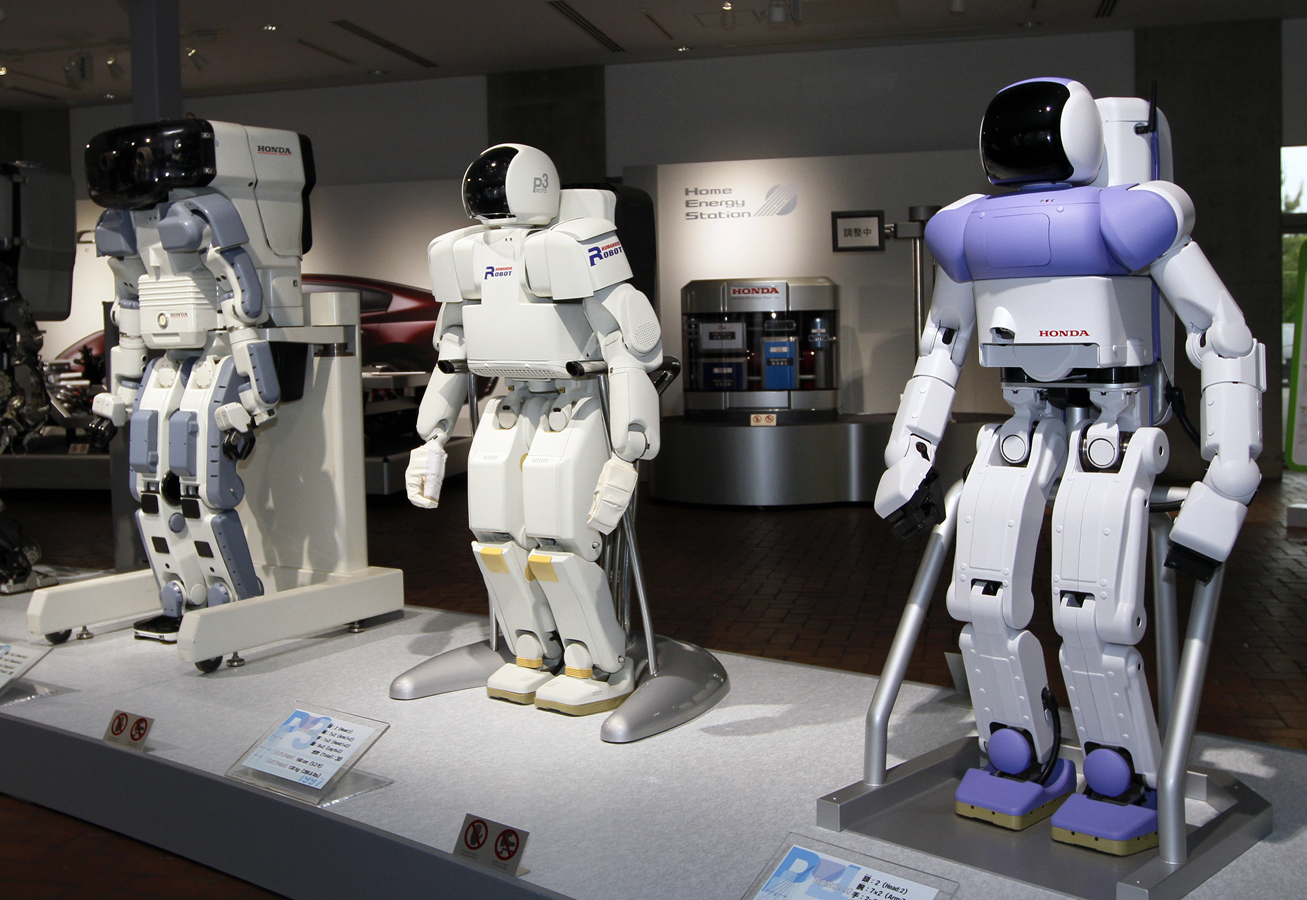 It’s been a while since I last blogged about labour markets and, in particular, about the effect of automation on wages and employment. My most recent post on this topic was on the 14th of April 2018 and it was mostly a reflection on some interesting findings that had been reported by Acemoglu et al (2017). More specifically, Acemoglu and Restrepo (2017) developed a theoretical framework to evaluate the effect of AI on employment and wages. They concluded that the effect was negative and potentially sizeable (for a more detailed discussion see my blog).
It’s been a while since I last blogged about labour markets and, in particular, about the effect of automation on wages and employment. My most recent post on this topic was on the 14th of April 2018 and it was mostly a reflection on some interesting findings that had been reported by Acemoglu et al (2017). More specifically, Acemoglu and Restrepo (2017) developed a theoretical framework to evaluate the effect of AI on employment and wages. They concluded that the effect was negative and potentially sizeable (for a more detailed discussion see my blog).
Using a model in which robots compete against human labor in the production of different tasks, we show that robots may reduce employment and wages … According to our estimates, one more robot per thousand workers reduces the employment to population ratio by about 0.18–0.34 percentage points and wages by 0.25–0.5 percent.
Since then, I have seen a constant stream of news on my news feed about the development of ever more advanced industrial robots and artificial intelligence. And this was not because of some spooky coincidence (or worse). It has been merely a reflection of the speed at which technology has been progressing in this field.
There are now robots that can run, jump, hold conversations with humans, do gymnastics (and even sweat for it!) and more. It is really impressive how fast change has been happening recently in this field – and, unsurprisingly, it has stimulated the interest of labour economists!
A paper that has recently come to my attention on this subject is by Graetz and Michaels (2018). The authors put together a panel dataset on robot adoption within seventeen countries from 1993 to 2007 and use advanced econometric techniques to evaluate the effect of these technologies on employment and productivity growth. Their analysis focuses exclusively on developed economies (due to data limitations, as they explain) – but their results are nevertheless intriguing:
We study here for the first time the relationship between industrial robots and economic outcomes across much of the developed world. Using a panel of industries in seventeen countries from 1993 to 2007, we find that increased use of industrial robots is associated with increases in labor productivity. We find that the contribution of increased use of robots to productivity growth is substantial and calculate using conservative estimates that it comes to 0.36 percentage points, accounting for 15% of the aggregate economy-wide productivity growth.
The pattern that we document is robust to including various controls for country trends and changes in the composition of labor and other capital inputs. We also find that robot densification is associated with increases in both total factor productivity and wages, and reductions in output prices. We find no significant relationship between the increased use of industrial robots and overall employment, although we find that robots may be reducing the employment of low-skilled workers.
This is very positive news for most – except, of course, for low-skilled workers. Indeed, like Acemoglu and Restrepo (2017) and many others, this study shows that the effect of automation on employment and labour market outcomes is unlikely to be uniform across all types of workers. Low-skilled workers are found again to be likely to lose out and be significantly displaced by these technologies.
And if you are wondering which sectors are likely to be disrupted most/first by automation, the rankings developed by McKinsey and Company (see chart below) would give you an idea of where the disruption is likely to start. Unsurprisingly, the sectors that seem to be the most vulnerable, are the ones that use the highest share of low-skilled labour.

Articles
Questions
- “The effect of automation on wages and employment is likely to be positive overall”. Discuss.
- Using examples and anecdotal evidence, do you agree with these findings?
- Using Google Scholar, put together a list of 5 recent (i.e. 2015 or later) articles and working papers on labour markets and automation. Compare and discuss their findings.
 Artificial Intelligence (AI) is transforming the way we live and work, with many of us knowingly or unknowingly using some form of AI daily. Businesses are also adopting AI in increasingly innovative ways. One example of this is the use of pricing algorithms, which use large datasets on market conditions to set prices.
Artificial Intelligence (AI) is transforming the way we live and work, with many of us knowingly or unknowingly using some form of AI daily. Businesses are also adopting AI in increasingly innovative ways. One example of this is the use of pricing algorithms, which use large datasets on market conditions to set prices. However, some of the very features that make algorithms effective can also facilitate anti-competitive behaviour that can harm consumers. In economic terms, collusion occurs when firms co-ordinate their actions to reduce competition, often leading to higher prices. This can happen both explicitly or implicitly. Explicit collusion, commonly referred to as illegal cartels, involves firms agreeing to co-ordinate their prices instead of competing. On the other hand, tacit collusion occurs when firms’ pricing strategies are aligned without a formal agreement.
However, some of the very features that make algorithms effective can also facilitate anti-competitive behaviour that can harm consumers. In economic terms, collusion occurs when firms co-ordinate their actions to reduce competition, often leading to higher prices. This can happen both explicitly or implicitly. Explicit collusion, commonly referred to as illegal cartels, involves firms agreeing to co-ordinate their prices instead of competing. On the other hand, tacit collusion occurs when firms’ pricing strategies are aligned without a formal agreement. Furthermore, there may be additional risks if competitors use the same algorithmic software to set prices. This can facilitate the sharing of confidential information (such as pricing strategies) and, as the algorithms may be able to predict the response of their competitors, can facilitate co-ordination to achieve higher prices to the detriment of consumers.
Furthermore, there may be additional risks if competitors use the same algorithmic software to set prices. This can facilitate the sharing of confidential information (such as pricing strategies) and, as the algorithms may be able to predict the response of their competitors, can facilitate co-ordination to achieve higher prices to the detriment of consumers. In the posters and frames case, the CMA was able to act because one of the firms involved reported the cartel itself. Authorities like the CMA depend heavily on the firms involved to ‘whistle blow’ and report cartel involvement. They incentivise firms to do this through leniency policies that can offer firms reduced penalties or even complete immunity if they provide evidence and co-operate with the investigation. For example, GB eye reported the cartel to the CMA and therefore, under the CMA’s leniency policy, was not fined.
In the posters and frames case, the CMA was able to act because one of the firms involved reported the cartel itself. Authorities like the CMA depend heavily on the firms involved to ‘whistle blow’ and report cartel involvement. They incentivise firms to do this through leniency policies that can offer firms reduced penalties or even complete immunity if they provide evidence and co-operate with the investigation. For example, GB eye reported the cartel to the CMA and therefore, under the CMA’s leniency policy, was not fined.  Global long-term economic growth has slowed dramatically since the financial crisis of 2007–8. This can be illustrated by comparing the two 20-year periods 1988 to 2007 and 2009 to 2028 (where IMF forecasts are used for 2024 to 2028: see WEO Database under the Data link below). Over the two periods, average annual world growth fell from 3.8% to 3.1%. In advanced countries it fell from 2.9% to 1.6% and in developing countries from 4.8% to 4.3%. In the UK it fell from 2.4% to 1.2%, in the USA from 3.1% to 1.8% and in Japan from 1.9% to 0.5%.
Global long-term economic growth has slowed dramatically since the financial crisis of 2007–8. This can be illustrated by comparing the two 20-year periods 1988 to 2007 and 2009 to 2028 (where IMF forecasts are used for 2024 to 2028: see WEO Database under the Data link below). Over the two periods, average annual world growth fell from 3.8% to 3.1%. In advanced countries it fell from 2.9% to 1.6% and in developing countries from 4.8% to 4.3%. In the UK it fell from 2.4% to 1.2%, in the USA from 3.1% to 1.8% and in Japan from 1.9% to 0.5%. In the UK, labour productivity growth in the production industries was 6.85% per annum from 1998 to 2006. If this growth rate had been maintained, productivity would have been 204% higher by the end of 2023 than it actually was. This is shown in the chart (click
In the UK, labour productivity growth in the production industries was 6.85% per annum from 1998 to 2006. If this growth rate had been maintained, productivity would have been 204% higher by the end of 2023 than it actually was. This is shown in the chart (click  A major determinant of long-term economic growth and productivity is investment. Investment has been badly affected by crises, such as the financial crisis and COVID, and by geopolitical tensions, such as the war in Ukraine and tensions between the USA and China and potential trade wars. It has also been adversely affected by government attempts to deal with rising debt caused by interventions following the financial crisis and COVID. The fiscal squeeze and, more recently higher interest rates, have dampened short-term growth and discouraged investment, thereby dampening long-term growth.
A major determinant of long-term economic growth and productivity is investment. Investment has been badly affected by crises, such as the financial crisis and COVID, and by geopolitical tensions, such as the war in Ukraine and tensions between the USA and China and potential trade wars. It has also been adversely affected by government attempts to deal with rising debt caused by interventions following the financial crisis and COVID. The fiscal squeeze and, more recently higher interest rates, have dampened short-term growth and discouraged investment, thereby dampening long-term growth. Artificial intelligence. One important driver of productivity growth is technological advance. The rapid advance in AI and its adoption across much of industry is likely to have a dramatic effect on working practices and output.
Artificial intelligence. One important driver of productivity growth is technological advance. The rapid advance in AI and its adoption across much of industry is likely to have a dramatic effect on working practices and output.  Training. And it is not just training in the use of AI that is important. Training generally is a key ingredient in encouraging productivity growth. In the UK, there has been a decline in investment in adult education and training, with a 70% reduction since the early 2000s in the number of adults undertaking publicly-funded training, and with average spending on training by employers decreasing by 27% per trainee since 2011. The Institute for Fiscal Studies identifies five main policy levers to address this: “public funding of qualifications and skills programmes, loans to learners, training subsidies, taxation of training and the regulation of training” (see link in articles below).
Training. And it is not just training in the use of AI that is important. Training generally is a key ingredient in encouraging productivity growth. In the UK, there has been a decline in investment in adult education and training, with a 70% reduction since the early 2000s in the number of adults undertaking publicly-funded training, and with average spending on training by employers decreasing by 27% per trainee since 2011. The Institute for Fiscal Studies identifies five main policy levers to address this: “public funding of qualifications and skills programmes, loans to learners, training subsidies, taxation of training and the regulation of training” (see link in articles below). Public-sector investment is also key. Good road and rail infrastructure and public transport are vital in encouraging private investment and labour mobility. And investment in health, education and training are a key part in encouraging the development of human capital. Many countries, the UK included, cut back on public-sector capital investment after the financial crisis and this has had a dampening effect on economic growth.
Public-sector investment is also key. Good road and rail infrastructure and public transport are vital in encouraging private investment and labour mobility. And investment in health, education and training are a key part in encouraging the development of human capital. Many countries, the UK included, cut back on public-sector capital investment after the financial crisis and this has had a dampening effect on economic growth. Even if AI does massively boost the growth in world GDP, the distribution is likely to be highly uneven, both between countries and within countries. This could widen the gap between rich and poor and create a range of social tensions.
Even if AI does massively boost the growth in world GDP, the distribution is likely to be highly uneven, both between countries and within countries. This could widen the gap between rich and poor and create a range of social tensions.  In some industries, AI will enhance labour productivity. It will be a tool that will be used by workers to improve the service they offer or the items they produce. In other cases, it will replace labour. It will not simply be a tool used by labour, but will do the job itself. Workers will be displaced and structural unemployment is likely to rise. The quicker the displacement process, the more will such unemployment rise. People may be forced to take more menial jobs in the service sector. This, in turn, will drive down the wages in such jobs and employers may find it more convenient to use gig workers than employ workers on full- or part-time contracts with holidays and other rights and benefits.
In some industries, AI will enhance labour productivity. It will be a tool that will be used by workers to improve the service they offer or the items they produce. In other cases, it will replace labour. It will not simply be a tool used by labour, but will do the job itself. Workers will be displaced and structural unemployment is likely to rise. The quicker the displacement process, the more will such unemployment rise. People may be forced to take more menial jobs in the service sector. This, in turn, will drive down the wages in such jobs and employers may find it more convenient to use gig workers than employ workers on full- or part-time contracts with holidays and other rights and benefits. Another set of issues arises in education. What knowledge should students be expected to acquire? Should the focus of education continue to shift towards analytical skills and understanding away from the simple acquisition of knowledge and techniques. This has been a development in recent years and could accelerate. Then there is the question of assessment. Generative AI creates a range of possibilities for plagiarism and other forms of cheating. How should modes of assessment change to reflect this problem? Should there be a greater shift towards exams or towards project work that encourages the use of AI?
Another set of issues arises in education. What knowledge should students be expected to acquire? Should the focus of education continue to shift towards analytical skills and understanding away from the simple acquisition of knowledge and techniques. This has been a development in recent years and could accelerate. Then there is the question of assessment. Generative AI creates a range of possibilities for plagiarism and other forms of cheating. How should modes of assessment change to reflect this problem? Should there be a greater shift towards exams or towards project work that encourages the use of AI?
 The emergence of the
The emergence of the  Tech giants and online platforms, in particular, have been a focus of recent intervention by competition authorities. Investigations and intervention have related to a range of practices, including self-preferencing in the ranking of search results, the bundling of apps (and other alleged anti-competitive leveraging strategies), the collection, usage and sharing of data, and the setting of access conditions to mobile ecosystems and app stores.
Tech giants and online platforms, in particular, have been a focus of recent intervention by competition authorities. Investigations and intervention have related to a range of practices, including self-preferencing in the ranking of search results, the bundling of apps (and other alleged anti-competitive leveraging strategies), the collection, usage and sharing of data, and the setting of access conditions to mobile ecosystems and app stores.  A report by MPs on the influential Business, Energy and Industrial Strategy Committee published in October, urged the Government to publish a draft Digital Markets Bill that would help deter predatory practices by big tech firms ‘without delay’.
A report by MPs on the influential Business, Energy and Industrial Strategy Committee published in October, urged the Government to publish a draft Digital Markets Bill that would help deter predatory practices by big tech firms ‘without delay’. It’s been a while since I last blogged about labour markets and, in particular, about the effect of automation on wages and employment. My most recent post on this topic was on the 14th of April 2018 and it was mostly a reflection on some interesting findings that had been reported by Acemoglu et al (2017). More specifically, Acemoglu and Restrepo (2017) developed a theoretical framework to evaluate the effect of AI on employment and wages. They concluded that the effect was negative and potentially sizeable (for a more detailed discussion
It’s been a while since I last blogged about labour markets and, in particular, about the effect of automation on wages and employment. My most recent post on this topic was on the 14th of April 2018 and it was mostly a reflection on some interesting findings that had been reported by Acemoglu et al (2017). More specifically, Acemoglu and Restrepo (2017) developed a theoretical framework to evaluate the effect of AI on employment and wages. They concluded that the effect was negative and potentially sizeable (for a more detailed discussion 